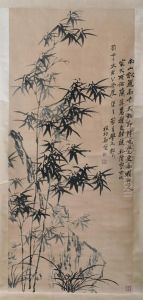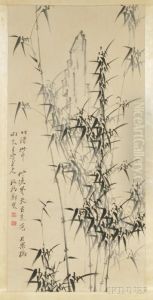Zheng Banqiao Paintings
Zheng Banqiao, also known as Zheng Xie, was a prominent Chinese painter, calligrapher, and poet during the Qing Dynasty. Born in 1693 in Jiangsu Province, he grew up in a time of political stability and cultural revival in China. Despite his humble origins, Zheng was recognized for his intellect and artistic talents at an early age.
Zheng initially pursued a career in civil service, passing the imperial examinations and obtaining a position as a government official. However, disenchanted by the corruption and rigidity he encountered in the bureaucracy, he eventually resigned from his official post to concentrate on his artistic pursuits. This decision allowed him to fully embrace his creative instincts and to develop a distinctive style that would become highly influential in the history of Chinese art.
Zheng Banqiao is best known for his paintings of bamboo, which are celebrated for their vivid expression and dynamic brushwork. He was a member of the 'Eight Eccentrics of Yangzhou,' a group of artists who are renowned for their unconventional and individualistic styles that broke away from the orthodox techniques promoted by the Chinese literati. In addition to bamboo, Zheng also painted orchids, rocks, and other elements of nature, often accompanied by poetic inscriptions.
His calligraphy is characterized by a bold and free-flowing style that reflects his philosophy of spontaneity and naturalness. Zheng Banqiao's literary work and his epigrams express his critical views on society and his advocacy for a simple and honest life. His art and writings not only gained him a considerable following during his lifetime but have also continued to influence generations of artists and scholars.
Zheng Banqiao passed away in 1765. Today, he is remembered as one of the most important cultural figures of the Qing Dynasty, with his works being highly prized by collectors and studied by students of Chinese art history.


